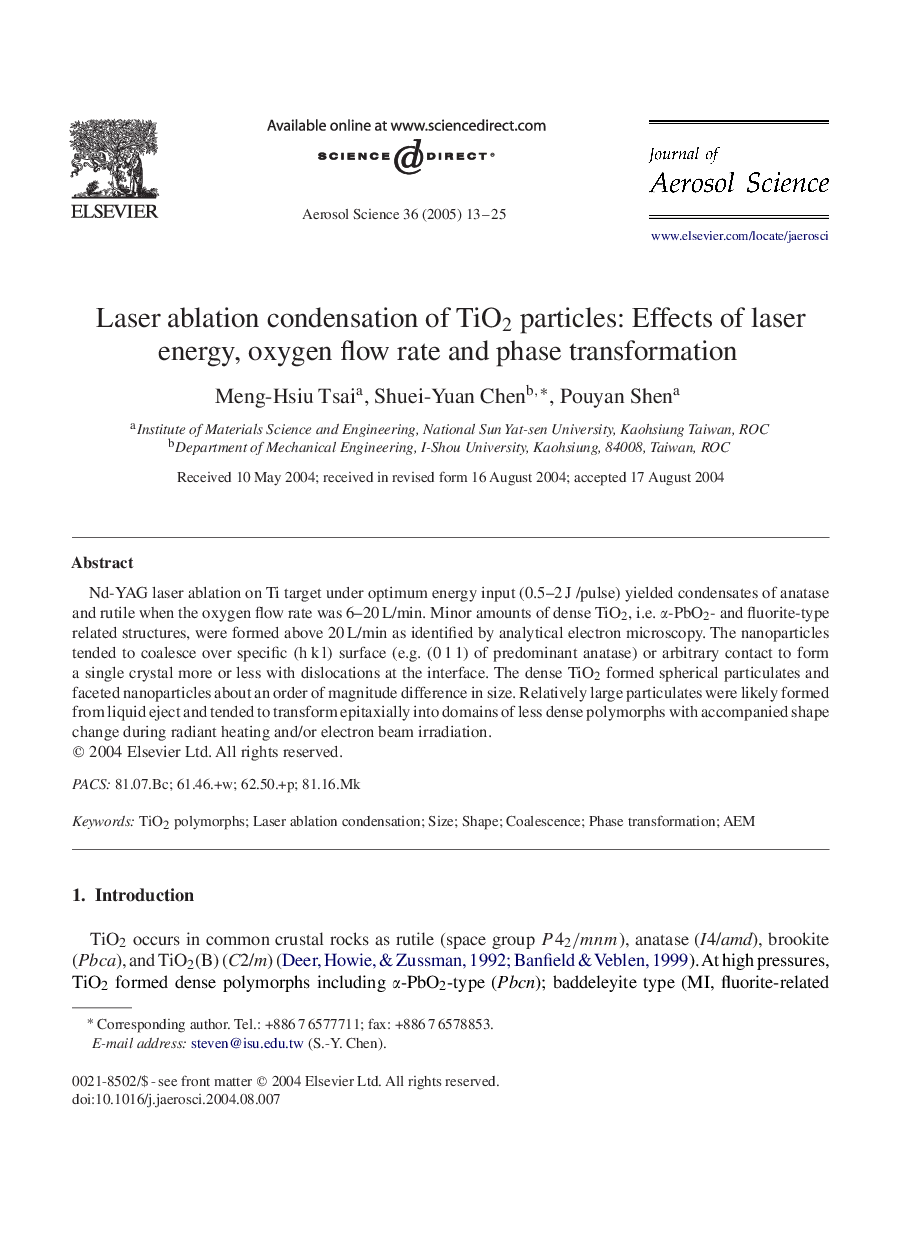| Article ID | Journal | Published Year | Pages | File Type |
|---|---|---|---|---|
| 9460517 | Journal of Aerosol Science | 2005 | 13 Pages |
Abstract
Nd-YAG laser ablation on Ti target under optimum energy input (0.5-2 J /pulse) yielded condensates of anatase and rutile when the oxygen flow rate was 6-20 L/min. Minor amounts of dense TiO2, i.e. α-PbO2- and fluorite-type related structures, were formed above 20 L/min as identified by analytical electron microscopy. The nanoparticles tended to coalesce over specific (hkl) surface (e.g. (0 1 1) of predominant anatase) or arbitrary contact to form a single crystal more or less with dislocations at the interface. The dense TiO2 formed spherical particulates and faceted nanoparticles about an order of magnitude difference in size. Relatively large particulates were likely formed from liquid eject and tended to transform epitaxially into domains of less dense polymorphs with accompanied shape change during radiant heating and/or electron beam irradiation.
Related Topics
Physical Sciences and Engineering
Earth and Planetary Sciences
Atmospheric Science
Authors
Meng-Hsiu Tsai, Shuei-Yuan Chen, Pouyan Shen,
